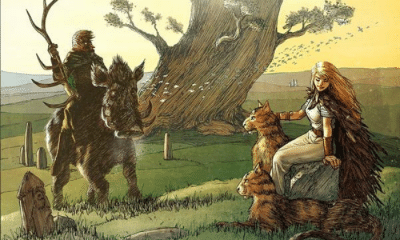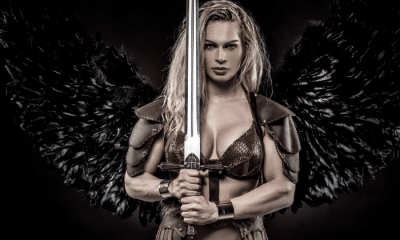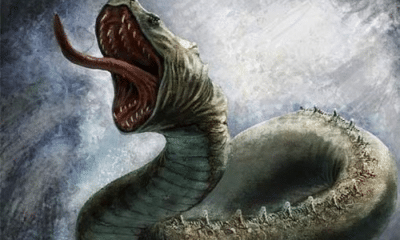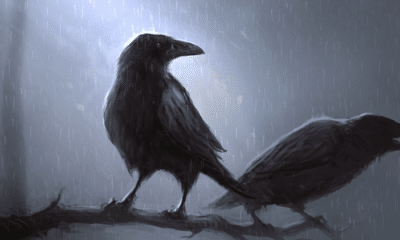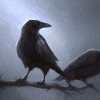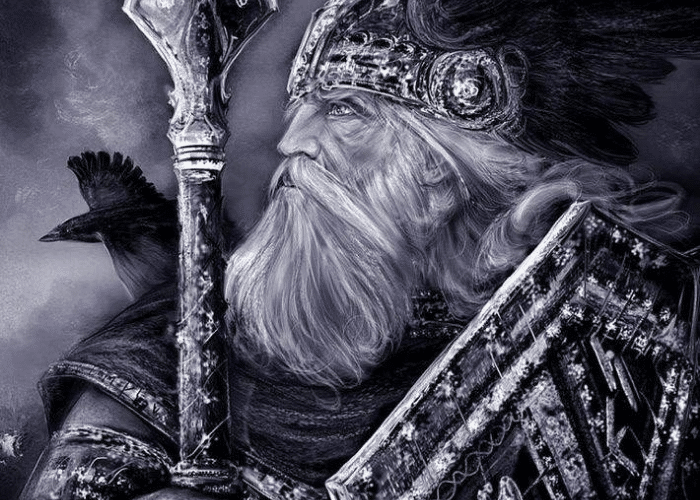
Norse
Gungnir: Odin’s Spear and an Iconic Weapon
Gungnir: Odin’s Spear and an Iconic Weapon
Odin is often pictured with his spear, but do you know how important this weapon really was? Keep reading to find out more about Gungnir, the magical weapon Odin carried into battle.
It is not uncommon in Norse mythology to have very few sources that describe any person or place. That’s why it might be surprising that we have relatively ample information about an item.
The items carried by the gods, however, were obviously very important in the Norse world. They amplified the gods’ powers, symbolized their roles, and identified them in art.
Some of the most important items were the gods’ weapons, the ultimate symbols of their powers. While Odin’s weapon may have looked like an ordinary spear, it was actually a powerful item that symbolized both his magical powers and his role as a warrior god.
Gungnir: Odin’s Spear
Among the most important and iconic items in Norse mythology were the weapons of the gods. These magical items had names and origin stories that are sometimes more well-known than those of many of the gods themselves.
One of the most prominent of these important weapons was Gungnir, Odin’s spear.
While, like many aspects of Norse mythology, there are relatively few written records concerning Gungnir, there is a wealth of archaeological evidence. Many images of Odin show him holding his spear and, in some cases, it is used to identify the chief god in otherwise ambiguous images.
It was named “The Swaying One” for the way it moved in battle. While ordinary spears flew in a relatively straight line, Gungnir moved and twisted.
This was because it always found its target. No matter how it was thrown, Gungnir would turn itself so that it hit whatever, or whomever, Odin aimed for.
In addition to its magical properties, Gungnir was also said to be perfectly balanced. This further enhanced Odin’s ability to hit any target.
According to the Poetic Edda, Gungnir was one of the valuable items Loki brought back from his journey to Svartalfheim.
When Loki mischievously cut off Sif’s golden hair, he went to the dwarves to have a replacement made of real gold. He met with workmen called the Sons of Ivaldi to have magical golden hair created.
While Loki was there, he noticed an amazing spear in the dwarves’ workshop. He asked about it and the Sons of Ivaldi happily gave it to him as a gift for the gods.
Loki returned to Asgard with these and other gifts that he had wagered with the dwarves to create. The gods were so pleased with their gifts that they all but forgot that Loki had only gotten them because he had committed an offense against Thor’s wife.
Thor, Odin, and Freyr each received items from Loki’s trip. Gungnir, the spear that had inspired Loki to collect the items, was given to Odin.
Later in the Poetic Edda, the great spear is mentioned again. One of the Valkyries tells the hero Sigurd that the tip of Gungnir is inscribed with powerful magical runes.
The Prose Edda also talks about Odin’s spear. In addition to relating the story of its creation, Snorri Sturluson’s work detailed how the spear would be used at Ragnarok.
In the gods’ last battle, Odin was destined to face Fenrir, Loki’s monstrous wolf offspring. He would use his most valued weapon.
The Prose Edda describes Odin riding out to the battle with the Einherjar, the warriors of Valhalla. At the head of the great host, he will be wearing a golden helmet, an impressive cloak of mail, and he will carry Gungnir.
Although Odin would carry his favored weapon into battle, Gungnir would not be enough to stop the dread wolf. Fenrir would kill Odin and all the Einherjar before finally falling to Odin’s son Vidarr.
My Modern Interpretation
While many of the gods had magical weapons that were associated with them, Gungnir was particularly important.
In the Poetic Edda, an account is given of the first battle between the Aesir and Vanir gods. The two groups fought for supremacy early in their history, although they eventually came to a truce that gave them nearly equal status.
As the battle began, the Poetic Edda says that Odin threw his spear in an arc above the opposing forces. The image of Odin throwing his spear at the start of the battle became one of the most iconic in Germanic culture.
Odin officially started the battle by throwing his spear in this way, but the action also served a symbolic purpose. His worshippers would re-enact that moment in their own battles in honor of their god.
When Viking Age warriors entered the battle, they often threw a spear ahead and called out a prayer to Odin. This recreated his own action and served as a dedication to him.
By throwing the spear, Norse warriors consecrated the battleground and made it a place holy to Odin. Dedicating the battle to him meant that any blood spilled would be in his name.
In this way, Norse warriors used their spears to give blood sacrifices to their god. Their own deaths and those of their enemies would please their god.
Odin was a distinct figure in Norse mythology because he was a god of both magic and war. The dedication of the spear honored both by using a magical invocation in battle.
The spear Odin threw in that first battle was almost certainly not Gungnir. Since Freyr, a Vanir god, was present in Asgard when Loki brought Gungnir from Svartalfheim, Odin did not own the spear until after the war between the Aesir and Vanir gods.
But Odin’s magical spear became a central part of his iconography because it was an even more powerful symbol of his place on the battlefield. Rather than being a mundane weapon used for a practical purpose, it was a magical tool that showed its owner’s total command over sites of battle.
In Summary
In Norse mythology, Gungnir was one of the most powerful items owned by the gods. Odin’s spear, it was perfectly balanced and magically charmed so that it always hit its target.
Odin’s spear was made by the dwarves. It was one of the magical gifts Loki won when he went to Svartalfheim after stealing Sif’s hair.
The spear was also described as being present at Ragnarok. Although it was not enough to save Odin’s life in the last battle, it was one of the most iconic weapons to be carried into the fray.
Although it was likely not the first spear used by Odin, Gungnir also symbolized his actions in the world’s first major battle.
At the start of the Aesir-Vanir War, Odin hurled his spear across the battlefield and declared that it belonged to him. Viking Age warriors mimicked this action to invoke Odin and make all the blood spilled during battle a sacrifice in his honor.
Although Gungnir was not the spear used in that battle, showing Odin with his spear invoked the idea of his consecrated battlefield. Odin’s spear was a symbol of his power over both battle and magic.


